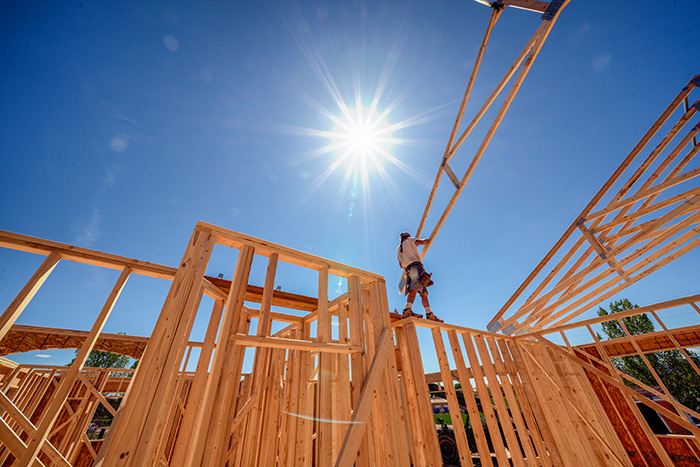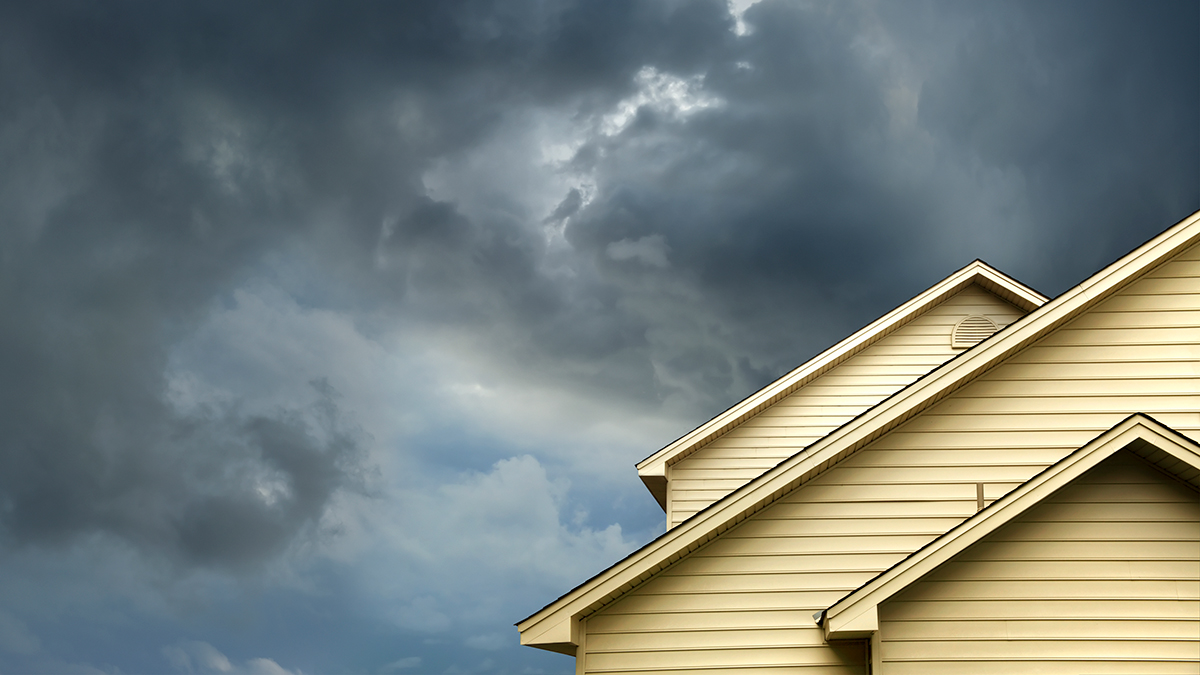Get our independent lab tests, expert reviews and honest advice.
Home warranty insurance

It’s a confusing insurance product that goes by many names, and it’s supposed to protect homeowners from incompetent builders who skip town, go bust, or part ways with this world.
Unfortunately, it doesn’t do much to protect against unscrupulous builders who are still in business.
What is home warranty insurance?
The insurance in question covers building defects as well as non-completion of work, but only in limited circumstances. It is actually purchased by the builder, but the premiums get passed along to the homeowner. Depending on the state, the insurance is called domestic building insurance (Vic), home building compensation cover (NSW), home warranty insurance (Qld), building indemnity insurance (SA), home indemnity insurance (WA), residential building insurance, housing indemnity insurance, or builders warranty insurance (ACT) and residential building insurance (NT).
It’s called home warranty insurance in Tasmania, but the product is not currently available in the state. A consultation process aimed at re-introducing it is currently underway.
But whatever it’s called, it has the same significant shortcomings when it comes to protecting the people who pay for it, unless you happen to live in Queensland.
Problems with payouts
In every state except Queensland, there will be no insurance payout if the builder hasn’t gone missing, died, become insolvent or lost their licence due to a tribunal decision (though in Victoria loss of licence but not the other three scenarios is enough to trigger a claim).
If they’re still plying their trade, it’ll be up to the homeowner to track down the builder, instigate any legal action through a state tribunal system, and pay for it.
Judging by the stories we’ve heard, that won’t be easy.
If you applied the model to a home and contents insurance policy, it would be like having to track down the crook that burgled your house instead of being able to make a claim
That’s because home warranty insurance operates as a scheme of last resort across most of the country – a type of cover strictly limited to the above scenarios.
In Queensland’s first-resort scheme, the Queensland Building and Construction Commission (QBCC) is meant to pay you the benefit if it agrees the work is shoddy and then go after the builder to get its money back.
A QBCC spokesperson tells CHOICE that 150,171 home warranty insurance policies were issued in 2021-22 and that 1,628 claims were finalised, leading to $36 million in payments to policyholders.
While Victoria’s scheme is not as consumer-friendly as Queensland’s, it does allow homeowners to access insurance if the builder fails to comply with a court order to repair substandard work (for contracts signed after 1 July 2015).
In NSW, a new 10-year liability insurance – or decennial insurance – was recently proposed for apartment buildings that would allow owners corporations to have serious defects repaired for up to 10 years after the building is first occupied. But the insurance is not yet available.
In short, home warranty insurance by any name has issues, which is probably why it’s been the subject of a number of government inquiries over the years – none of which has done much to improve outcomes for homeowners.

Different states, different arrangements
In South Australia, ACT and the Northern Territory, home builders and renovators are required to take out home warranty insurance for contracts of $12,000 or more.
The figures are $20,000 in NSW and WA, $16,000 in Victoria and $3300 in Queensland.
The premiums (generally somewhere between 0.5% and 1% of the contract value) are added by the builder to the homeowner’s costs, so you end up paying for nothing if the builder simply refuses to come back and fix the problem (unless you live in Queensland).
Tasmania does not currently have a state-mandated warranty insurance scheme.
The number of years and dollar amounts you’re covered for also vary from state to state, though it’s generally five or six years for structural defects and, where states distinguish between the two, a year or two for non-structural defects.
For policies taken out after 28 October 2016 in Queensland, homeowners are covered for six years and six months and have to lodge a claim within three months of noticing a structural defect.
For non-structural defects, Queensland homeowners are covered for six months after the work is completed.

What happens if the builder won’t make good?
If the builder simply refuses to repair the shoddy work or return your money, your only option in states and territories other than Queensland is to take them to the consumer affairs tribunal in your state, and that can be a lengthy and costly process.
And if your builder does go broke, die or disappear before the complaint is resolved and you then have the right to access your home warranty insurance, it won’t cover legal costs against the builder.
These costs can easily exceed the amount you’re attempting to recover – in one case we reviewed, a claim for $63,000 incurred about $90,000 in legal fees.
CHOICE called for an overhaul of home warranty insurance schemes in a submission to a Senate Economics Committee review in 2008, one of the many government inquiries into this issue over the years. The overhaul is yet to come.
How (and when) to make a home warranty insurance claim.
Your builder is required to provide you with a home warranty insurance policy or certificate of insurance before starting the job if the contract meets your state’s criteria.
Don’t pay the deposit before you get the policy.
If the builder dies, disappears, goes out of business or loses their licence, the process for making an insurance claim varies from state to state, but you should generally contact the insurer or state-run scheme to begin the claims process (in some states, such as NSW, you’ll also need to contact Fair Trading).
In Queensland, you make the claim through the Queensland Building and Construction Commission.
If you suspect the builder has become insolvent and are seeking to confirm this for the insurer, contact the Australian Securities and Investments Commission if the builder is a company and Australian Financial Security Authority if the builder is a sole trader or part of a partnership.
After you discover building defects in your home, there’s a time limit for making a claim – 180 days in Victoria and six months in NSW, for instance, but you’ll only have three months for major defects in Queensland. The sooner the better.
Case study: Insurance payout falls short
One aggrieved homeowner, Beverly Loyson, told us her experience with home warranty insurance had led to “extreme emotional and financial damage”.
Loyson’s building suppliers and installers refused to come back and re-do defective work. The Victorian Building Commission (VBC) – now the Victorian Building Authority (VBA) – agreed the work was unacceptable, but the suppliers hit back, saying they’d only taken orders from the builder who’d hired them.
Her home warranty insurance payout wasn’t nearly enough to undo the damage the builder had done to her home, but she didn’t have the resources to challenge the insurer in court
The problem was that the home builder had gone out of business, owing the Loysons $80,000 in promised refunds and hundreds of thousands of dollars worth of needed repairs.
Her home warranty insurance payout wasn’t nearly enough to undo the damage the builder had done to her home, but she didn’t have the resources to challenge the insurer in court.
Loyson later found out the builder was involved in a Victorian Civil and Administrative Tribunal proceeding at the time he quoted for the job and had numerous complaints and a successful warranty claim on his record.
Case study: A no-win situation
Another homeowner we talked to, Anne Paten, said her home builder made major errors that called for extensive structural repairs – but when she demanded rectification, the builder told her he wouldn’t be fixing anything and that she could take her case to VCAT.
Everybody’s on the builder’s team and it’s all about delaying and adjourning and sending you broke
Homeowner Anne Paten
That’s a no-win prospect for homeowners, Paten says, since the builder’s legal team can draw out the process as long as possible.
“Everybody’s on the builder’s team and it’s all about delaying and adjourning and sending you broke.”
Paten said her research has led her to conclude that about half the licensed builders in Australia are “cowboys” who shouldn’t have been licensed or insured and can’t be trusted.
How to find a good builder
Many homeowners have found out the hard way that it’s no use relying on home warranty insurance for protection.
With last-resort insurance schemes in force throughout most of Australia, you should proceed with caution when shopping around for a trustworthy builder.
And because licensing is no guarantee of reliability or accountability, the best way to find a builder is through personal references from people you trust.
With last-resort insurance schemes in force throughout most of Australia, you should proceed with caution when shopping around for a trustworthy builder
It’s also important to know that the builder will probably be outsourcing some of the actual hands-on work to tradespeople, and some will be more skilled than others.
Doing due diligence on your builder
Unscrupulous builders may skimp on materials, hire low-cost tradespeople and keep a sizeable share of the contract price for themselves. Once you get a trustworthy recommendation, don’t be afraid to ask a few pointed questions.
- Do they provide homeowner contact details for recently completed jobs? Talk to previous customers and ask whether there were any disputes about the quality of the work and materials, completion deadlines or unexpected costs.
- Who will be doing the actual work? Are the tradespeople licensed? Ask for their names and verify by checking the public register in your state or territory.
- If the builder’s licence says “only for contracts not requiring home warranty insurance” on the public register, it means the builder has not yet been approved by an insurer and can’t offer home warranty insurance. Find another builder.
- The builder’s name on the insurance certificate should match the name on the building contract and the builder’s licence – otherwise the insurer will probably knock back any claim.





